#tree spirit
Text
I am TELLING YOU if you have spent months, years, around the same trees, land, etc., they WILL recognize you and reach out to you or not mind if you reach out to them. You don’t need to know anything about them.
A tree in the forest behind my parents house I’ve never spoken to before reached out - I never would’ve expected it. I don’t know what kind of tree it is. But of course this tree knows me. This tree has known me since I was six.
Trust me. This land knows you. These plants know you. They want to speak with you.
#personal#witchblr#witchcraft#witchy#magick#nature#spirituality#witchy vibes#green witch#green witchery#green witchcraft#spiritual growth#spirit work#spirit witch#animism#nature spirits#tree spirits#tree spirit#land spirits#land spirit#spirit communication#baby witch#baby witch tips
1K notes
·
View notes
Text

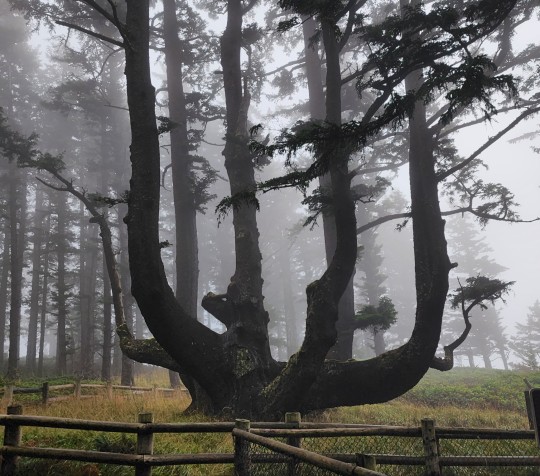
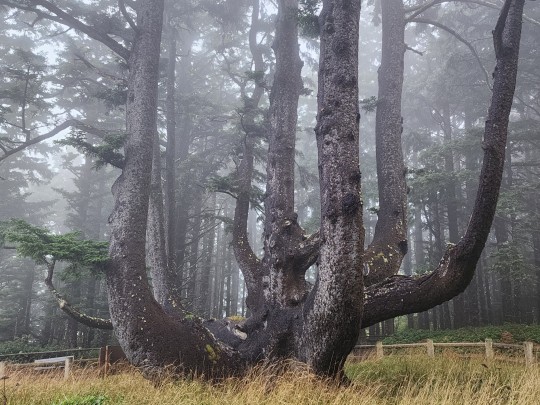
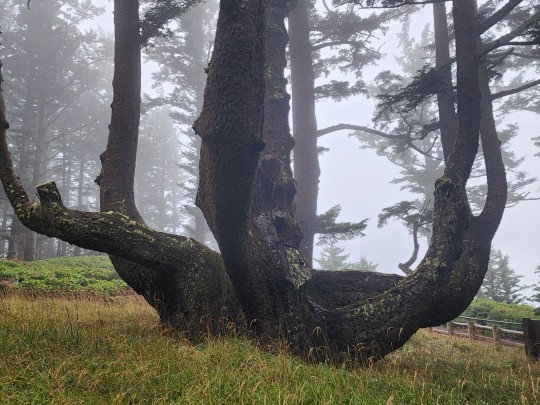
Not long ago, my husband and I were lucky enough to meet a truly awe-inspiring tree—a centuries old Sitka Spruce that was likely once utilized by the indigenous population for funerary rites.
While the area surrounding the tree was (rightfully) fenced off to prevent disrespect or damage to the site, I was able to lay my hands on the exposed roots that crept beyond the enclosed perimeter, and that still felt very powerful and special.
462 notes
·
View notes
Text


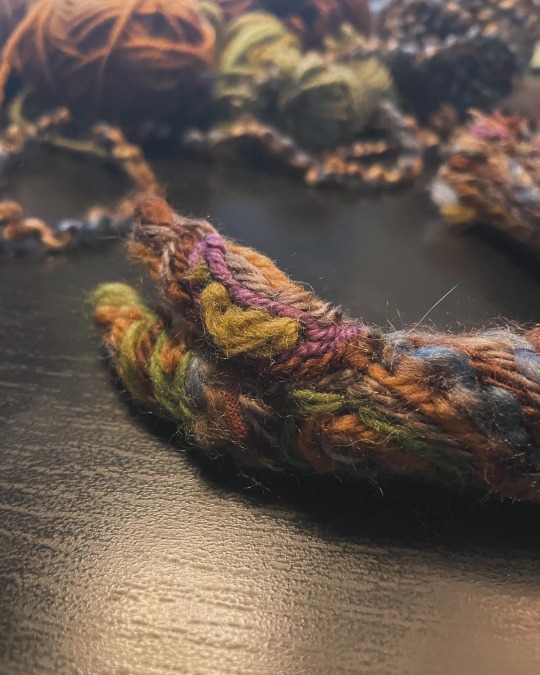
tree branch arm is done!!!!
92 notes
·
View notes
Photo

Tapio – The Finnish god of forests and the hunt
Tapio is a Finnish forest spirit or god in Finnish mythology. Hunters prayed to him before a hunt. His wife is the forest goddess, Mielikki (Ref). He is the father of Annikki, Tellervo, Nyyrikki (the god of hunting), and Tuulikki. Fitting the Green Man archetype, Tapio has a beard of lichen and eyebrows of moss.
Tapio is a major character in Kalevala, the Finnish national epic based on Finnish and Karelian folklore, the hero Lemminkäinen offers him and Mielikki prayers, gold and silver so he can catch the Hiisi elk.
Tapio, the personified forest, was sometimes depicted as being the size of a fir tree, fierce-looking, like a human being in the front, but like a gnarled old tree from behind. Often the forest deity was female, occasionally an especially beautiful woman, who enticed hunters or woodcutters staying in the woods overnight; but he, too, turned out to be a rotten old stump upon closer scrutiny. The various forest deities and spirits were generally capricious in nature and had to be constantly placated by those who were dependent on their favours. Thus hunters made offerings to the deity and made sure they did not break any taboos in the forest, such as making excessive noise or shooting unusual birds that might be the forest spirit in disguise.
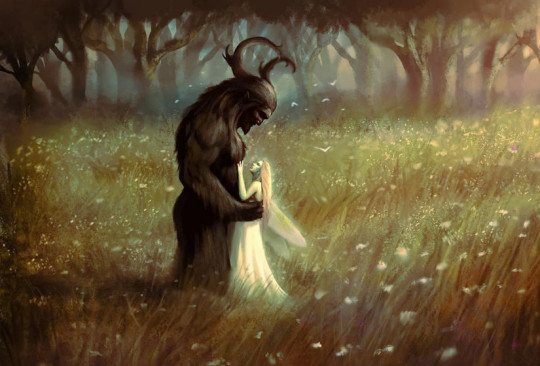
木にまつわる伝説・神話
伝説の樹木の神々 (18)
タピオ 〜 フィンランドの森と狩りの神
タピオはフィンランド神話に登場する森の精霊、または神である。彼の妻は森の女神ミエリッキ(参照)である。アンニッキ、テレルヴォ、ニャイリッキ (狩猟の神)、トゥーリッキの父である。タピオは、グリーンマンの原型にふさわしい人物で、地衣類の髭と苔の眉毛を持っている。
タピオは、フィンランドとカレリアの民話に基づくフィンランドの民族叙事詩『カレワラ』の主要人物である。『カレワラ』では、英雄レミンカイネンがヒイシのヘラ鹿を捕まえるために、彼とミエリッキに祈りと金と銀を捧げている。
森の精霊を擬人化したタピオは、モミの木の大きさで、正面から見ると人間のような獰猛な姿をしているが、後ろから見るとニョロニョロの老木のような姿で描かれることもあった。また、森の神は女性であることが多く、特に美しい女性で、森に一晩滞在する猟師や木こりを誘うこともあったが、彼もよくよく観察すると、腐った古い切り株であることが判明する。森の神々や精霊は気まぐれな性格で、その恩恵にあずかる者は常になだめなければならなかった。そのため、猟師は神に供物を捧げ、森での禁忌を破らないように気をつけた。例えば、過剰に音を立てたり、森の精霊の変装かもしれない珍しい鳥を撃ったりしないようにした。
#trees#tree legend#tree myth#tapio#mielikki#kalevala#karelian folklore#finish mythology#god of forests#tree spirit#lemminkäinen#legend#myths#folklore#green man#nature#art#forest
188 notes
·
View notes
Photo

Source details and larger version.
From spooky trees to giant trees to that tree that fell in the forest that no one heard: vintage tree imagery.
71 notes
·
View notes
Photo

881 notes
·
View notes
Text
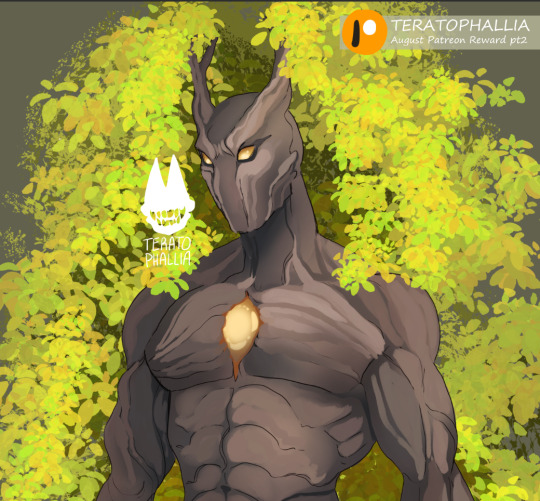
Cropped version of this month's part 2 in peetron rewards! You can see the full version over on my twitter!
#my art#teratophallia#digital art#lgbt artist#my post#trans artist#digital artist#art#character illustration#monster boyfriend#monster lover#monster oc#beautiful monsters#terat0philliac#teratophillia#terato#tree monster#treeant#tree spirit#exophelia#patreon
120 notes
·
View notes
Text
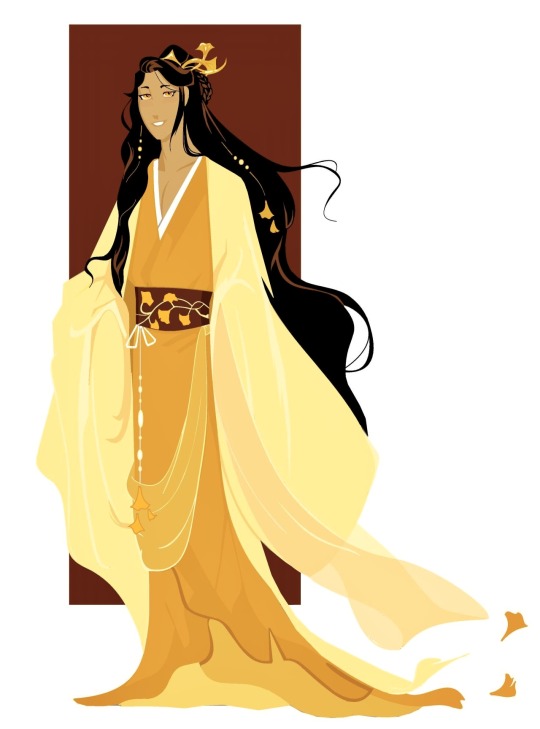
guEsS wHat??? more dragon au!!—this time it’s Gongyi Xiao’s ginkgo tree spirit design
#svsss dragon au#svsss#gongyi xiao#character design#tree spirit#i had so much fun designing his clothes and ornaments 😊#tho it took forever to figure out his hair :P#the more I think on his design and role in the story the more I’m liking him and YQY together#injured dragon lord desperate to return and save his brothers and the healer who won’t let him accidentally kill himself#I’m wondering who I should give the dragon au treatment to next#I’m up for any suggestions 😉#my art#scum villain#svsss art
112 notes
·
View notes
Text

kisses 😚 🌱
#genshin impact#scarahida#nahida#scaramouche#the wanderer#wanderer#happi happi happi#:3 :3#desert pavilion wanderer returns with a vengeance#what will he do next .... what nefarious acts will he commit...#...crimes against fashion...#on another note i just pulled nahida last week#i never realized but#that leaf is part of her hair!!!#it lights up when she casts her skill!#and i'm like dang!#she an ent fr?#plant girl#tree spirit#tree people#?#???#i mean i knew she was a branch but that's pretty cool#hehehe#art#mine
17 notes
·
View notes
Text
In Japanese kodama, the spirit of a tree, refers to a feeling of special kinship with the heart of a tree. It is our deepest respect for the tree… that we may offer the tree a second life.
George Nakashima
49 notes
·
View notes
Text
Old Man Willow
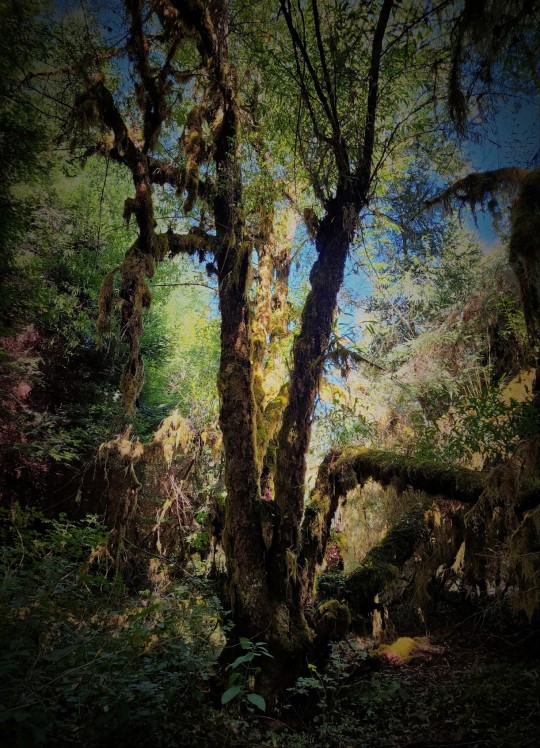


Recently, we made our way into an uncharted section of forest, following some interesting omens, and ended up discovering the single biggest and oldest Willow tree either of us has ever seen in this area.
These pictures do him no justice at all, but he is truly enormous and majestic. There's also a perfect Hollow in his trunk for offerings and a beautiful stream that's not too far away.
I feel very fortunate to have made the acquaintance of such a wise and powerful spirit.
#willow#shining willow#willow spirit#willow magic#tree spirit#tree magic#animism#green magic#plant magic#plant spirits#old man willow
67 notes
·
View notes
Text

Leave me in the woods
#original character#my ocs#ocs#my art#oc#art#watercolour#tree spirit#forest spirit#forest god#deer#forest giant#forest man#blood#sammal
11 notes
·
View notes
Photo
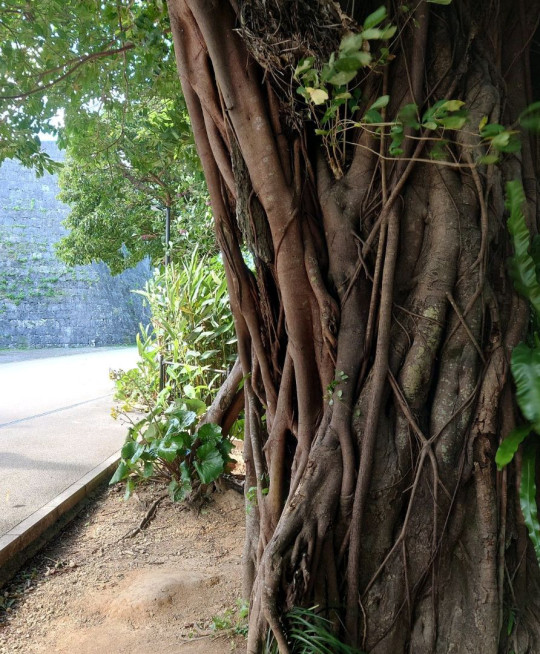
[Photo above: Banyan tree in Shuri Castle Park]
Legends and myths about trees
Forest spirits and natives (5)
Kijimuna – Mischievous red-haired spectres
Kijimuna are legendary small tree spirits from the Okinawa Islands in Japan, who live in trees (generally old banyan trees). They are said to look about 3 or 4 years old and have red hair.
Another name for the kijimuna is bungaya, which means roughly large-headed. The Kijimuna are known to be very mischievous, playing pranks and tricking humans. One of their best-known tricks is to lie upon a person's chest, making them unable to move or breathe such as sleep paralysis. Even though the Kijimuna are tricksters, they have been known to make friends with humans.
They are skilled fish catchers and only eat the left or both eyes of the fish they catch. Therefore, if you become friends with a Kijimuna, you can always get a fish and become rich. They are good at diving and fishing and catch a lot of fish in seconds. But all the fish they catch have no eyes. They can also run around on the water surface and can stand on the water while carrying people.
They are extremely hatred of hot pot lids, octopus, chickens and human farts, and it is forbidden to let them near the Kijimuna. They also die (or are forced to move to another tree), if a nail is driven into the tree in which they live. They will take terrible retribution, including murder, against anyone who breaks these prohibitions.
Nevertheless, as long as one do not break these prohibitions, they are basically harmless to humans, and many lores say that they are "good neighbours" with humans.
[History of Ryukyu Islands (collective name for Amami Islands, Okinawa Islands, Miyako Archipelago and Yaeyama Archipelago)]
The Ryukyu Islands are known to have been inhabited by humans for about 32,000 years.
The Ryukyu Kingdom was a monarchy, existed in the southwestern islands of Japan for about 450 years, from 15th century to 19th century. It developed through diplomacy and trade with China, Japan, Korea and Southeast Asian countries, and the castle of the Ryukyu dynasty, Shuri Castle, was the political, economic and cultural centre of its maritime kingdom. In the late 19th century, the Japanese Government, dispatched troops to oust King Shoutai from Shuri Castle and proclaimed the establishment of Okinawa Prefecture (Ryukyu Disposition). Here, the Ryukyu Kingdom was destroyed.
Genetic studies have shown that populations in the Ryukyu Islands (Okinawa Islands, Miyako Archipelago and Yaeyama Archipelago) have no direct genetic link to mainland China or Taiwanese populations and have identical paternal lines to mainland Japan, and nuclear DNA analysis in 2018 showed that genetically, Ryukyuans are the most closely related, followed by mainland Japanese, from the Ainu (Ref) perspective.
Furthermore, in 2021, a paper on archaeogenetics published in the journal Nature stated that DNA analysis of prehistoric human bones excavated from the Nagabaka (lit. Long graveyard) site in Miyakojima City showed that they were "100% pure Jomon", a research finding that indicates that prehistoric archipelago people came from the Okinawa Islands.

木にまつわる伝説・神話
森の精霊たちと原住民 (5)
キジムナー 〜 いたずら好きな赤毛の妖怪たち
キジムナーは、日本の沖縄諸島に伝わる伝説の小さな木の精霊で、樹木 (一般的にはガジュマルの老木) の中に住んでいる。見た目は3、4歳くらいで、赤い髪をしていると言われている。
キジムナーの別名は「ブンガヤ」であり、「頭の大きい」という意味である。キジムナーは非常にいたずら好きで、いたずらをして人間をだますことで知られている。最もよく知られているのは、人の胸の上に横たわり、身動きや呼吸をできなくさせる「金縛り」だ。そんなキジムナーだが、人間と仲良くなることもある。
魚捕りが巧みであり、しかも捕った魚の左目または両目だけしか食べな��。その為、キジムナーと仲良くなれば魚をいつでも貰え、漁運に恵まれる。海に潜って漁をするのが得意であっという間に多くの魚を獲る。でも、彼らが獲った魚は全部目が無い。また、水面を駆け回ることができ、人を連れながらでも水上に立てる。
熱い鍋蓋、タコ、ニワトリ、人間のおならを極端に嫌い、それらのものをキジムナーに近付けるのは禁忌である。また住んでいる木に釘を打たれると死ぬ (或いは別の木への転居を余儀なくされるとも)。これらの禁忌を破った人間に対しては、殺害を含む恐ろしい報復を為す事も辞さない。
然し、禁忌さえ破らなければ基本的に人間には無害な存在であり、人間とは「良き隣人」であると言う伝承が多い。
[琉球諸島 (奄美群島、沖縄諸島、宮古列島、八重山列島の総称) の歴史]
琉球諸島には、約3万2千年前から人類が住んでいたことがわかっている。
15世紀から19世紀までの約450年間、日本の南西諸島に存在した君主制国家、琉球王国は、中国をはじめ日本、朝鮮、東南アジア諸国との外交・貿易を通して発展し、琉球王朝の王城、首里城はその海洋王国の政治・経済・文化の中心にあった。しかし、19世紀後半、日本政府が軍隊を派遣し首里城から国王尚泰 (しょうたい) を追放し沖縄県の設置を宣言した(琉球処分)。これによって、琉球王国は滅亡した。
遺伝子研究では、琉球列島 (沖縄諸島、宮古列島、八重山列島) の集団は、遺伝的に中国本土や台湾の集団との直接的なつながりはなく、日本本土と同一の父系を持つという研究結果や、2018年の核DNA分析から遺伝的に、アイヌ(参照)から見て琉球人が最も近縁であり、次いで日本本土人が近縁であるという研究結果が発表されている。
さらに、2021年には、宮古島市の長墓遺跡から出土した先史時代の人骨をDNA分析した結果、「100%純粋な縄文人」であったとする考古遺伝学の論文が雑誌「ネイチャー」に掲載され、先史時代の列島人が沖縄諸島から来たことを示す研究結果が発表されている。
#trees#tree legend#tree myth#kijimuna#banyan tree#tree spirit#okinawa#ryukyu islands#ryukyu kingdom#syuri castle#legend#mythology#folklore#nature#art#history
156 notes
·
View notes
Text
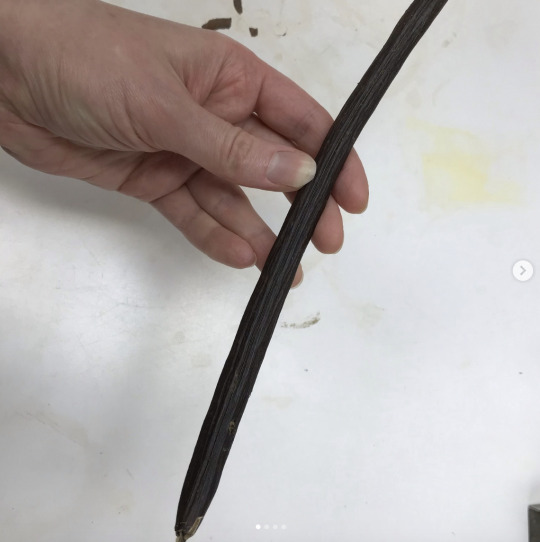

Today as I was walking to work, I passed by a Catalpa tree that grows wedged in between buildings and overspreads a parking lot. I wanted to get a seed pod so I could try germinating some seeds and grow my own Catalpa, but sadly all the seed pods on the ground were broken and muddy. All the pristine seed pods were high out of reach in the lofty boughs of the Catalpa. In disappointment, I muttered, "I wish I could get an intact seed pod". Suddenly, I heard a loud "crack" and a perfect clean seed pod fell from the tree and landed at my feet. I was so astonished that I said "thank you so much, Catalpa tree!" out loud. It makes one wonder if there's something to the old mythology of Dryads, Huldra, and Yakshini after all...
With its white orchid like flowers and parasol leaves, the Catalpa is a popular ornamental tree in the UK. This tree is commonly called the "Indian Bean Tree", which has misled many people to think it comes form India. In fact, the Catalpa is native to the Southern USA and the "Indian" in the name is the outdated term for Native Americans. Relatives of this tree are found in North America, the Caribbean, and East Asia.
The Catalpa has a curious relationship with a caterpillar. Catalpa trees are relatively pest and disease free due to the high concentrations of iriod glycosides in the plant tissue. The Catalpa Sphinx Moth (Ceratomia catalpae) caterpillars exclusively feed on the Catalpa and sequester the toxins in their own bodies, making the caterpillars unappealing to their usual predators. Research shows that one species of Catalpa (C. speciosa) reacts to caterpillar damage by releasing nectar from glands that attracts ladybirds and ants, which prey on the caterpillars.
#katia plant scientist#botany#plant biology#plants#plant science#nature#seed pods#trees#tree seeds#bean#catalpa#flowering tree#ecology#caterpillars#sphinx moth#toxins#native americans#dryad#tree spirit#serendipity#plant facts#plant scientist#plantblr#seeds#grow your own#botanical#plant aesthetic
18 notes
·
View notes
Photo

Source details and larger version.
Here's a collection of vintage jester imagery.
#jester#tree#vintage yearbook#1920s#tree spirit#faces in things#musician#vintage illustration#yearbook#illustration
51 notes
·
View notes
